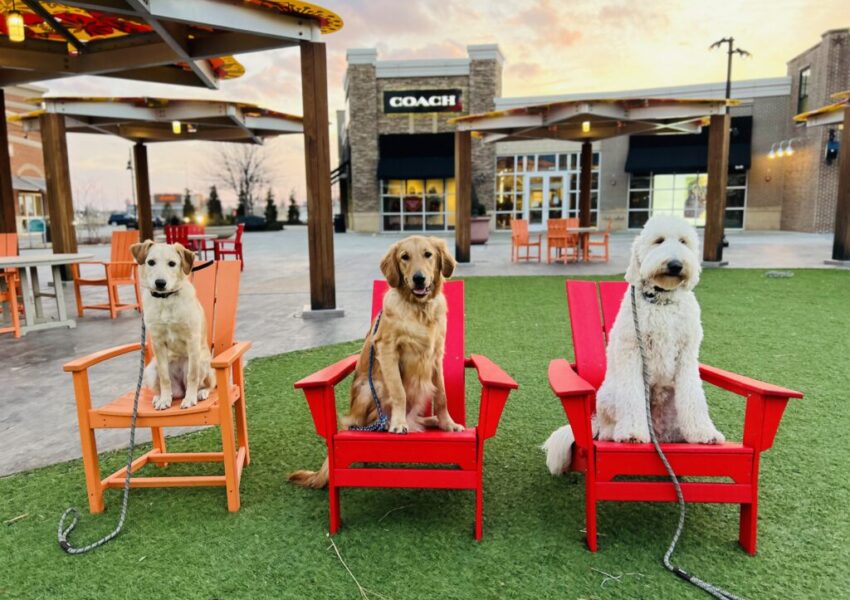Approximately some people might enjoy it, we can’t be with our dogs on a regular basis. Whether you’re taking a protracted vacation without the one you love pooch, or you simply need some quiet time to get things done throughout the house, a doggie daycare can be a lifesaver. However the question is: How will you choose the best one for your pet?
1. Require personal referrals from family, friends, and neighbors.
Turning to the people you trust frequently yields great results. So start early and put the term out.
Visit: www.the-doggy-house.co.uk
2. Do your own online research.
While you get ideas from people, Google the names of the facilities and owners. Look them through to Yelp, Angie’s List, and the BBB website. And, obviously, you can plug within your own search conditions to find places you might like to check out.
3. Visit facilities in person.
Once you’ve discovered some potential daycares, go have a tour. Focus on:
Staff to dog ratio
Overall cleanliness, appearance, and smell
Doors/gate: Are there at least two of these between your lobby and street? Are they in good working order, including latches and locks?
Outdoor areas: They must have appropriate fencing (at least 6’ or 7’). Make certain the fence is not compromised at all. Also notice if there’s plenty of water and shade available and that dogs are constantly monitored while outside.
General appearance and demeanor of staff: Are they friendly, knowledgeable, and communicative? Do they seem pleased to be there and well-rested? Do they seem to be to be well-liked by both human and canine clients? Be skeptical of staff that are sullen, tired, uninformed, or confused, and the ones who don’t interact well with human or canine clients.
The way the animals are treated and supervised: Search for staffers that give their full focus on the dogs. Watch the way they manage the dogs. Do they appear to be able to read dog body gestures? Are they able to head off scuffles at the pass? Are they calling the dogs by name? Take into account any employees who are on their phones or elsewhere distracted. Look out for staffers who seem either overly aggressive or too passive with the dogs. Do the dogs display happy body gestures (tail wagging, heads up, playing with each other)? Scan the corners – are dogs cowering or displaying behaviors that indicate they don’t feel safe?
4. Talk with managers/key staff and find out a little about the facility.
Ask lots of questions:
How long gets the facility been operating?
What is the application/evaluation process?
What is the normal day to day routine like?
Do they use cameras to monitor the dogs? Are they web-accessible to clients?
What are the qualifications of the workers?
Ask to see licenses and facility permits
Ask what their protocol is perfect for lost pet prevention and response
Ask how they handle emergencies like a dog fight, injury, or sickness
Ask questions about any online or person to person concerns you have about them
5. Ask previous and current clients what they take into account the facility.
You are able to do this by striking up conversations in the parking lot or by directly messaging or emailing the authors of any interesting online reviews.
6. Take notice of the parking lot and lobby.
Watch your body language of dogs entering the facility. Do they seem to be excited, or do they placed on the brakes? What do the dogs look like as they exit the facility?
Note how staffers handle dogs during drop off and grab. Are they cognizant of avoiding fights and letting the dogs bolt out the entranceway? Do they know and use dogs’ and humans’ names? Are they professional and efficient with any paperwork and payment procedures? Do they appear to truly have a lot of long-term clients or is the clientele mostly new?
7. Give them a trial run.
If you believe you’ve found successful, drop your pet off for simply a few hours while you run local errands. Make it a day when you’re able to drop everything and overcome there if anything goes sideways. While your dog is there, call and check in on your dog. Staff can provide a status report in fairly short order. When you select your pet up, require another report of what and exactly how she did. The greater specific the answers staff can give, the better.
8. Once you get home, notice your dog’s behavior.
She should be tired, but not totally exhausted. She might be considered a little stinky, but she shouldn’t reek of urine or feces. Make sure to give her body a complete once-over to look for any marks. Little scratches should be expected, but bites or other severe injuries should be a major concern. Sometimes, accidents happen at doggie daycare, but the facility should call you immediately to report them. If they don’t, they may be either trying to cover up it or they don’t know about it – neither which is good.
9. Stay alert.
Once you select a facility, stay involved and communicative. Things can transform as time passes, and accidents happen even in the best places, so don’t let yourself become too complacent. Continue to keep your radar up.
Leaving your pet with strangers can be stressful, but it doesn’t need to be. A little homework can go a long way, so do your homework, and you simply (as well as your dog) will reap the huge benefits.



